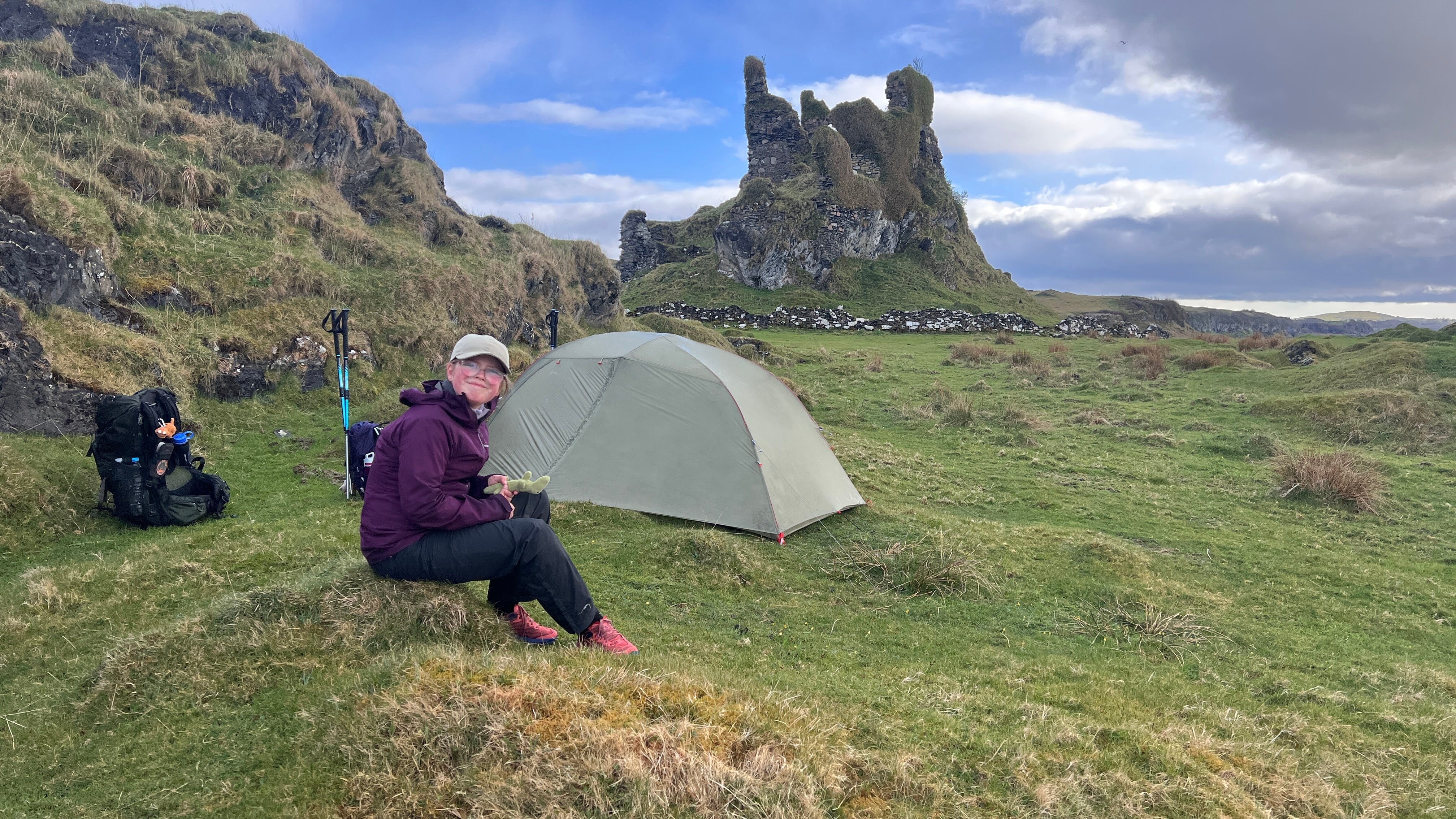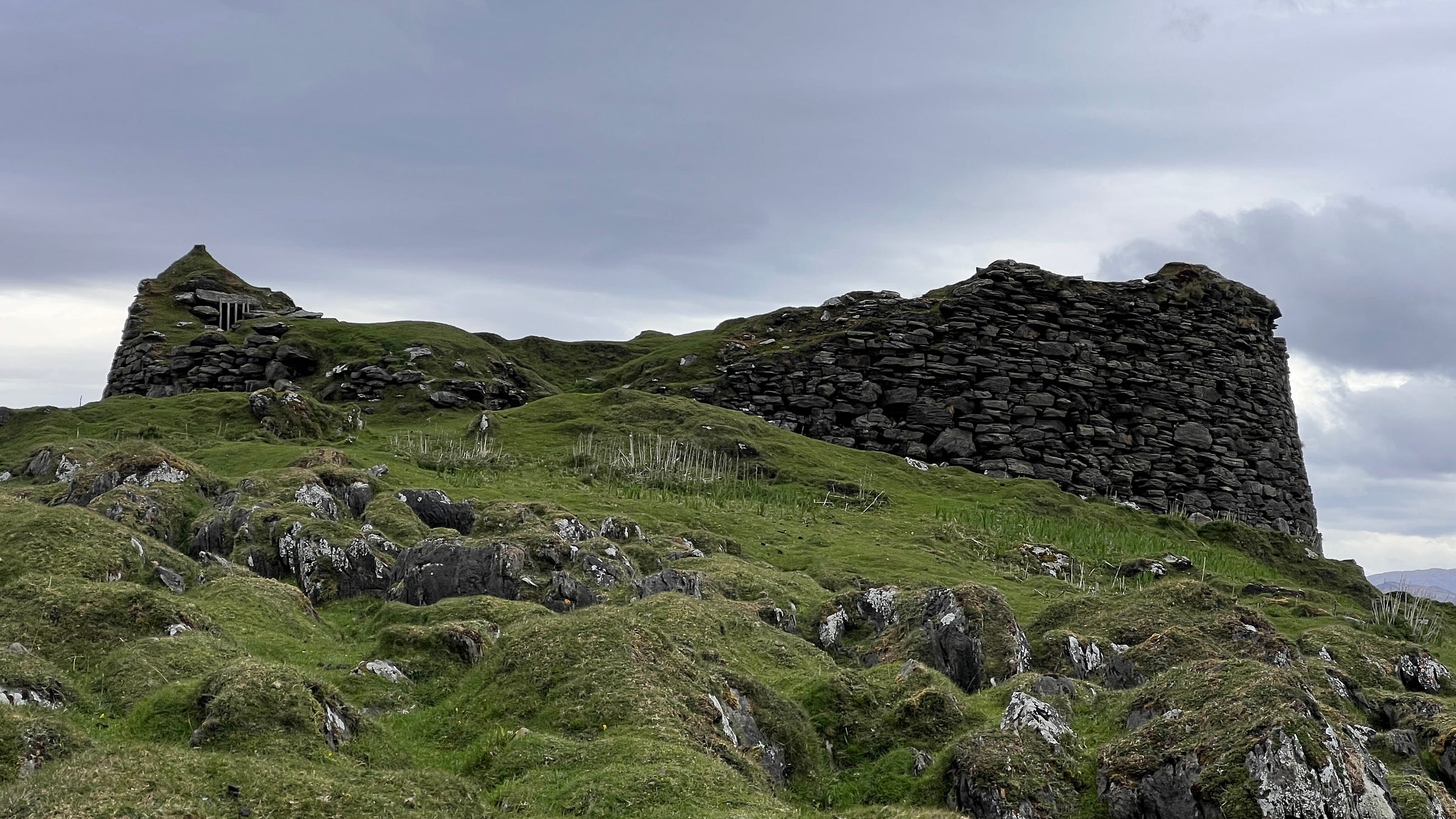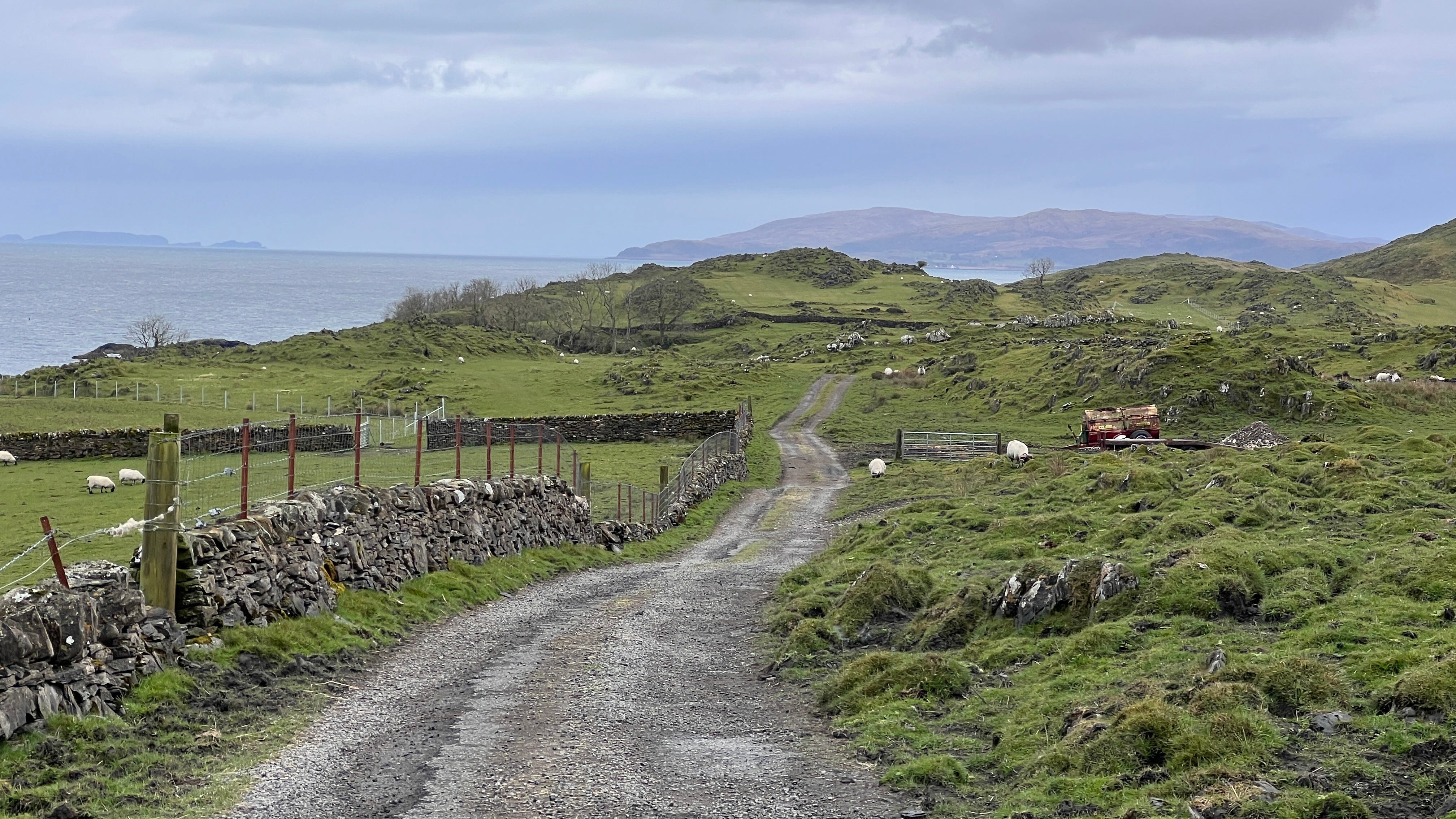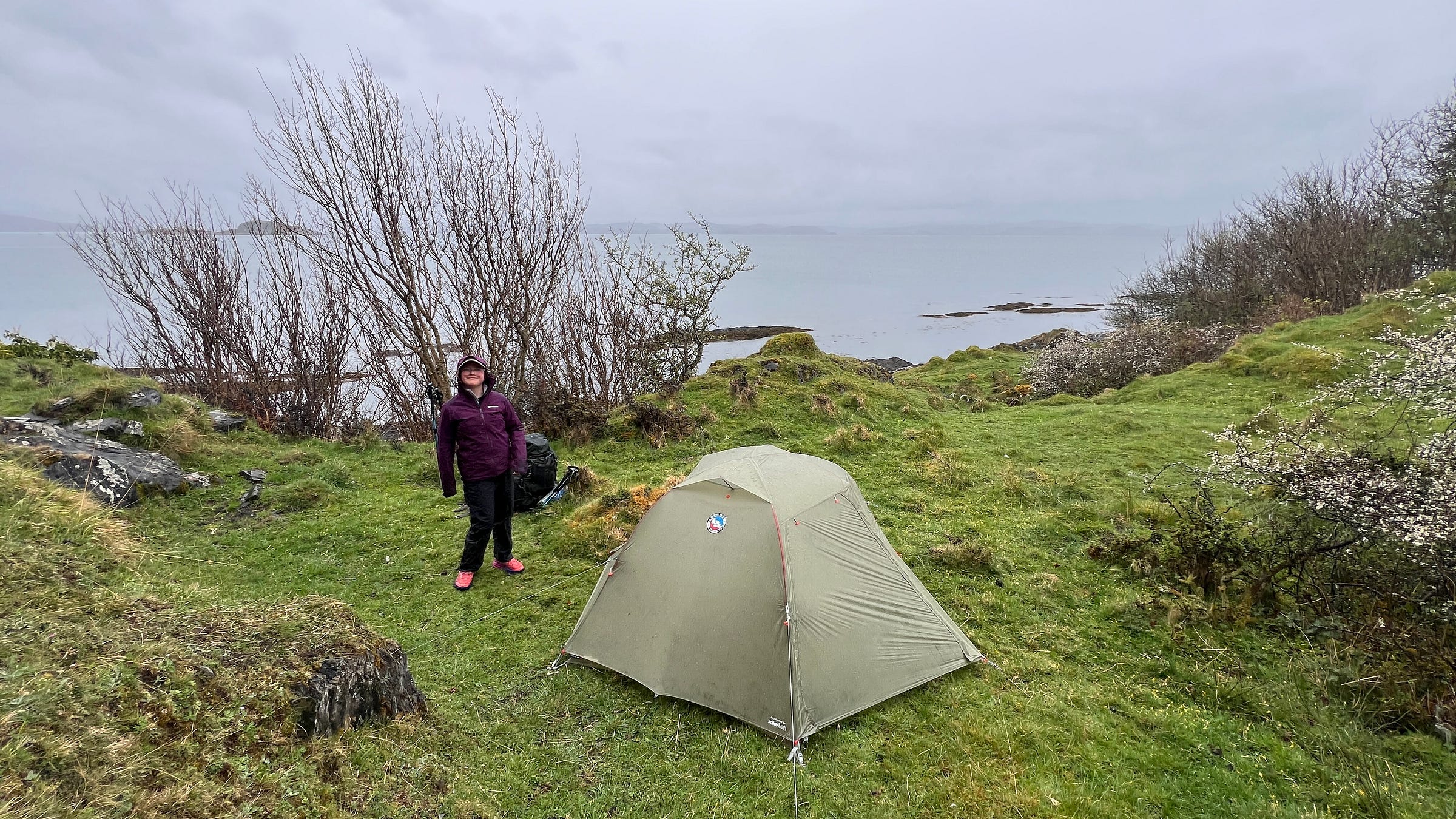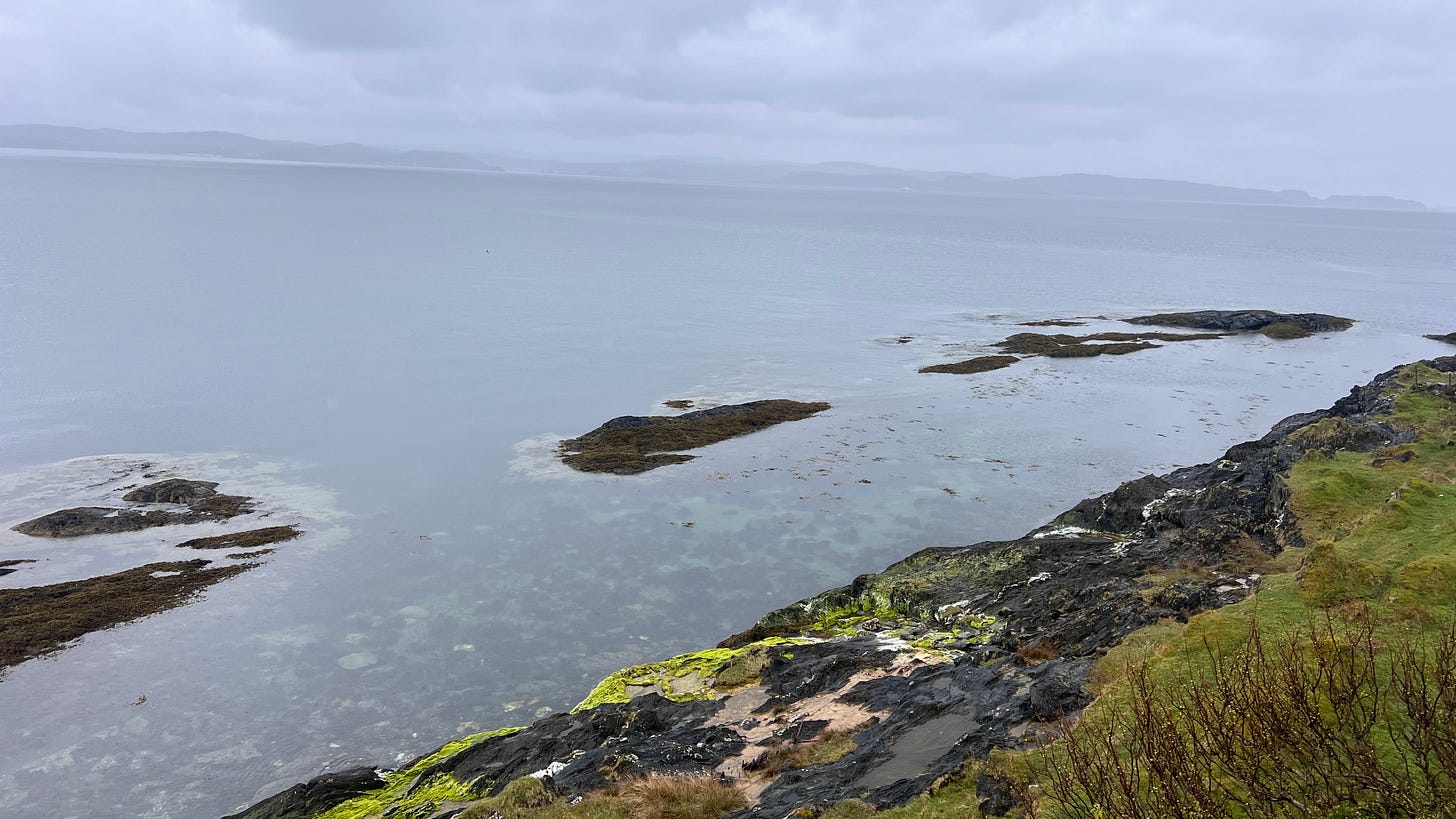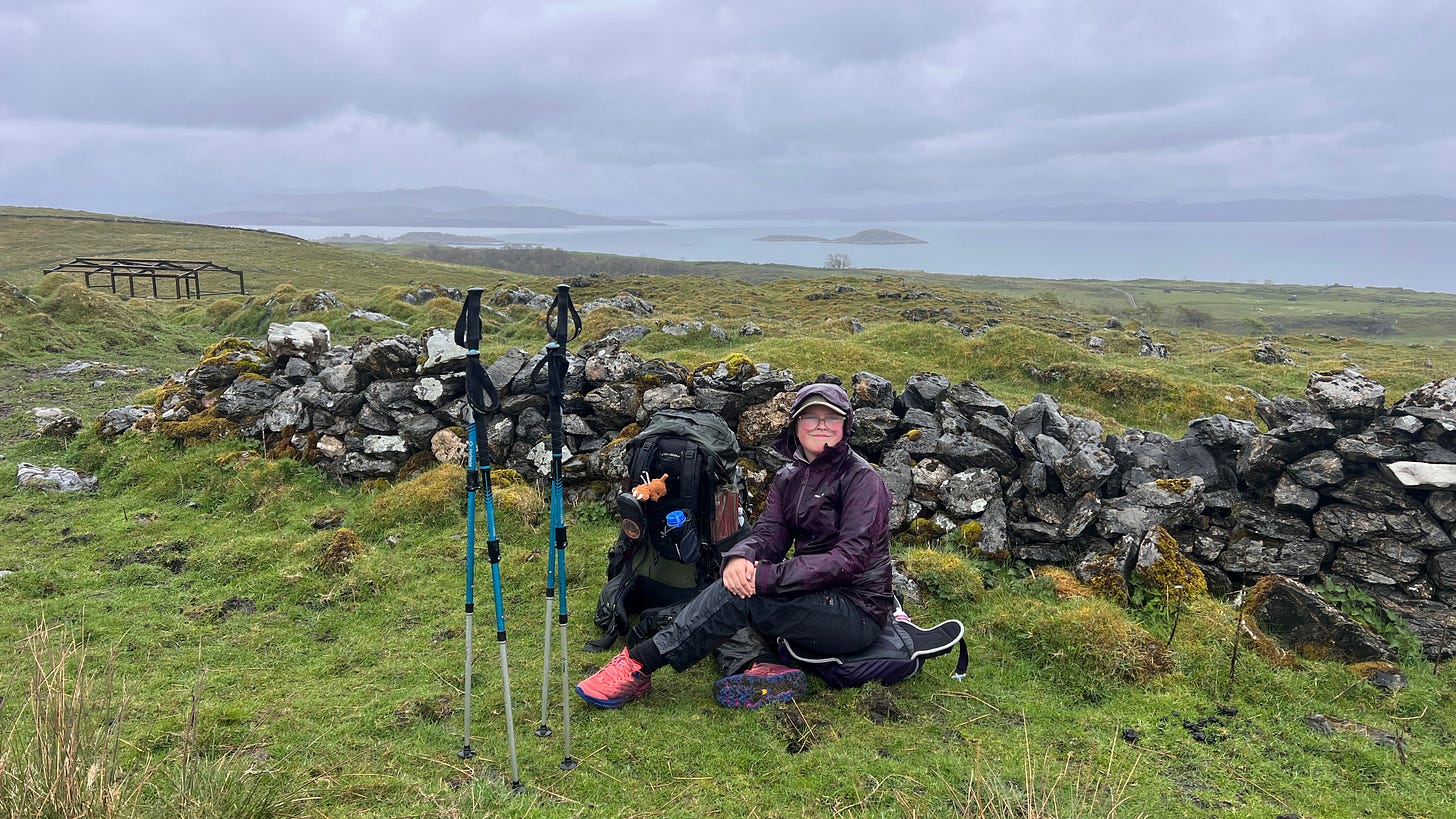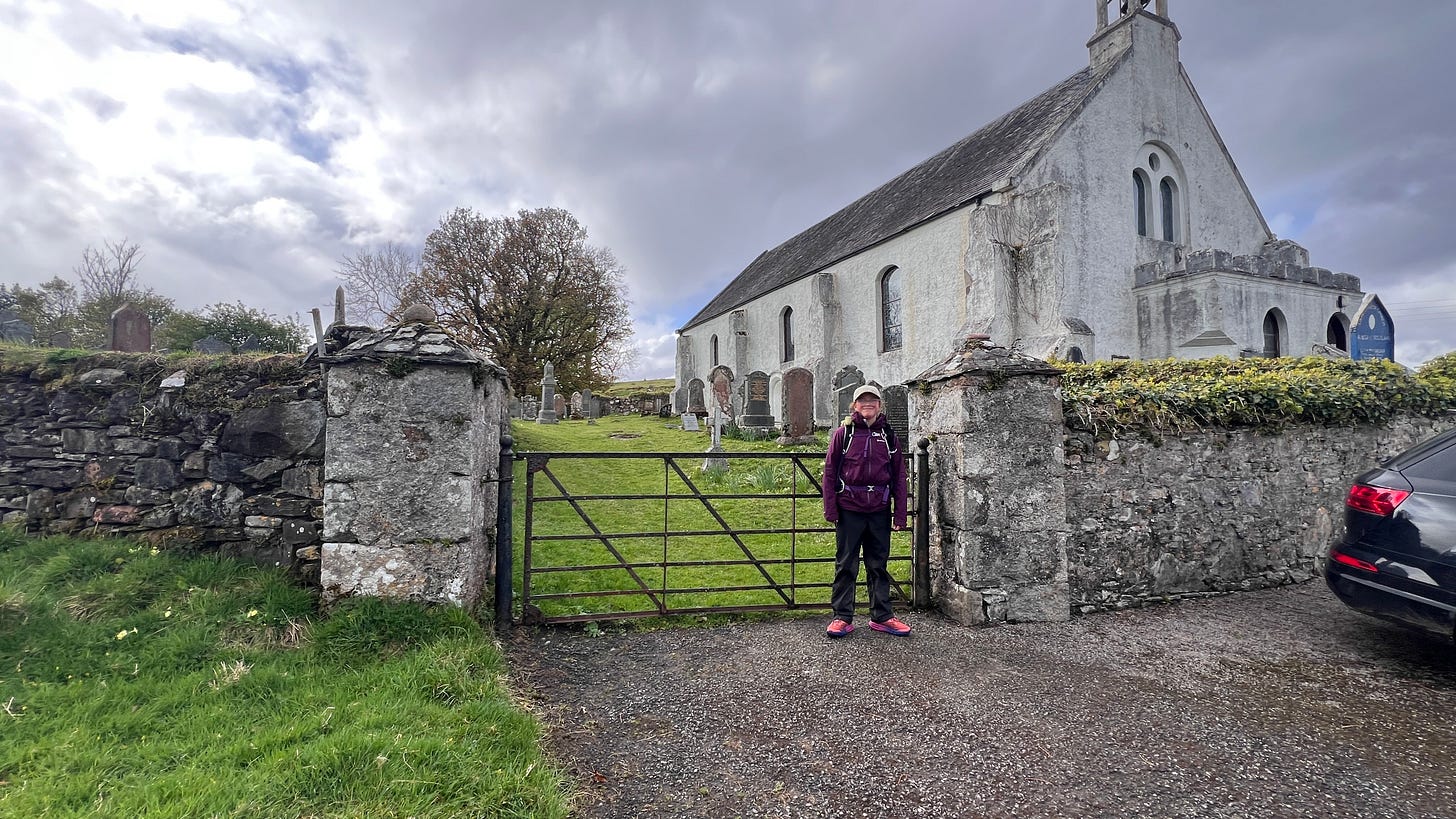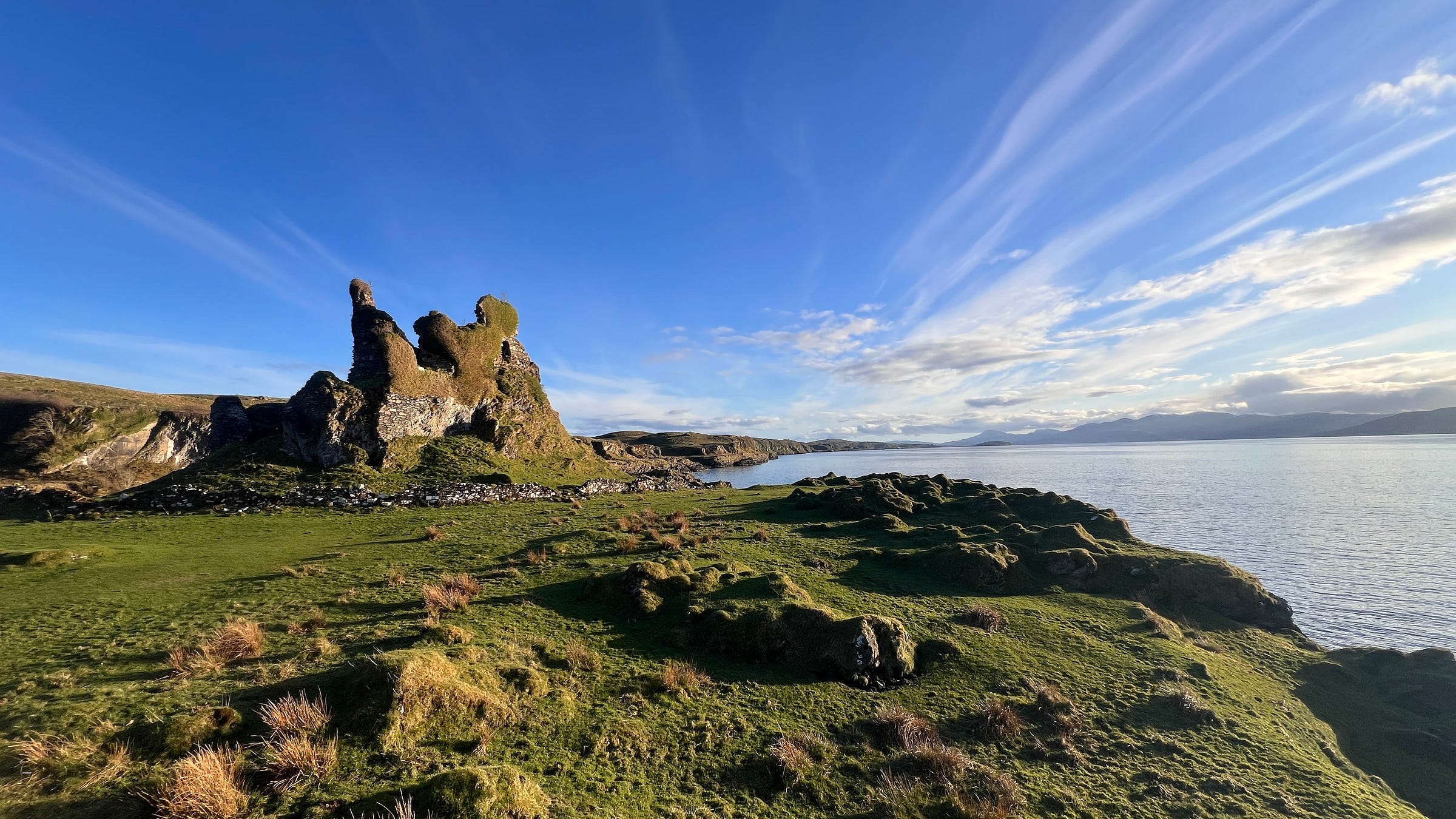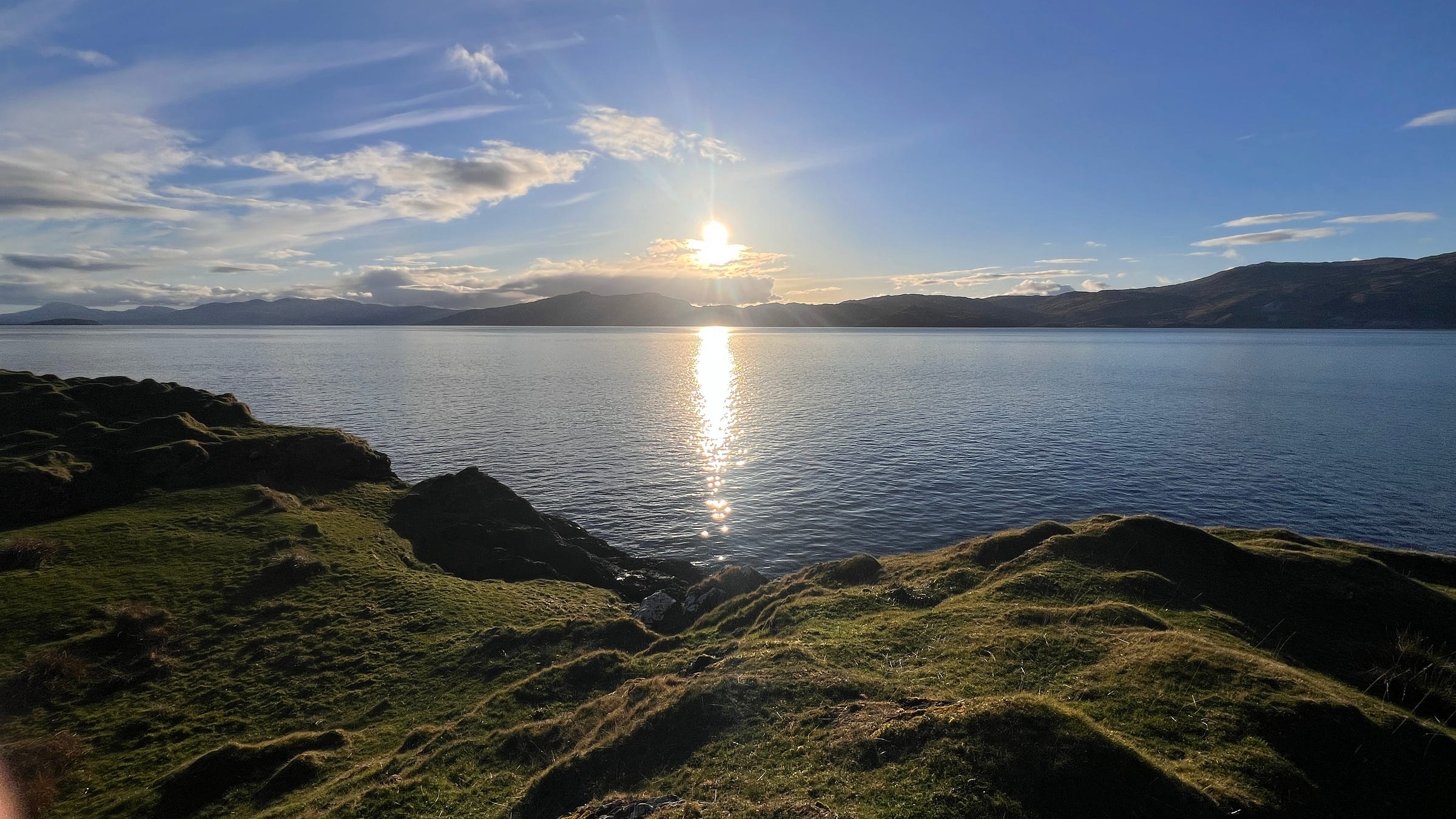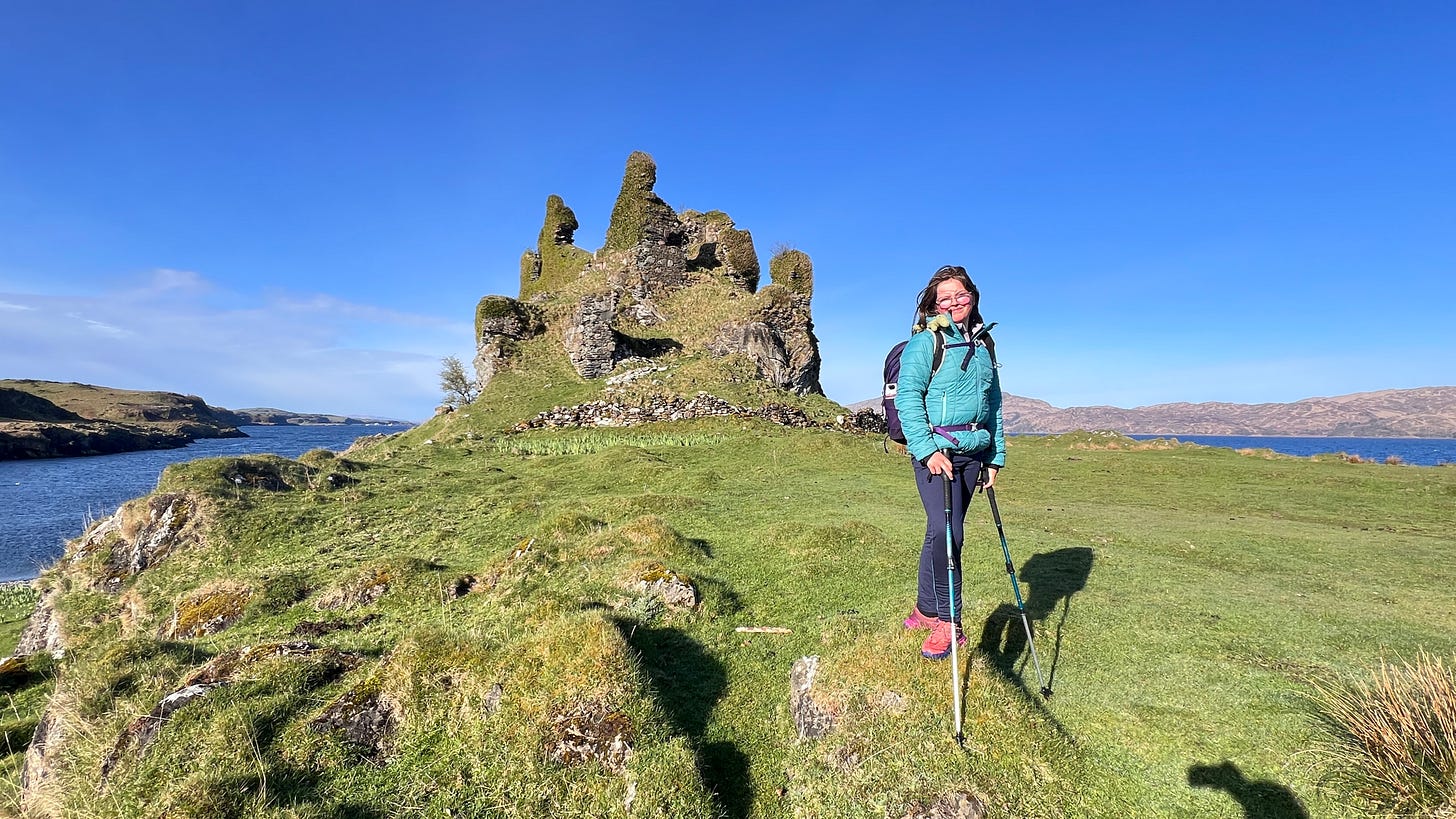Lismore | Three days hiking & wild camping around the island of Lismore
Located close to Oban in Loch Linnhe, Lismore gave us a diverse and exciting adventure full of history and rugged coastlines.
Located within the Inner Hebrides at the mouth of Loch Linnhe, just a short ferry ride from Oban, Lismore is 10 miles long, 1 mile at its widest, with a population of just 175. Lismore, meaning the 'Great Garden' in Gaelic, is a low-lying island, surrounded by the mountains of mainland Scotland and the Isle of Mull.
Lismore - Day 1
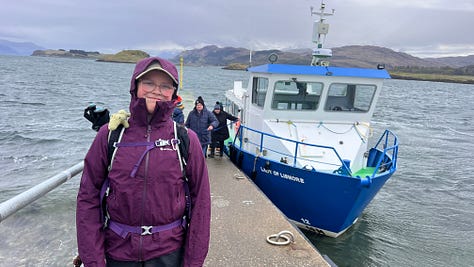
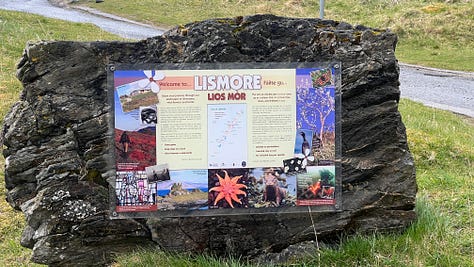
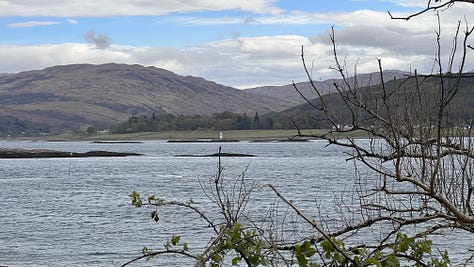
Eve and I caught the ferry at Port Appin to the northernmost point of Lismore. Arriving in Lismore, we set off with no plan or agenda except to explore and ‘see where we end up’. We made the most of this the moment we arrived.
There are two ferrys to Lismore. A foot passenger ferry from Port Appin to the northernmost point of Lismore operated by Argyll and Bute council (this is the one we caught) . The second ferry goes from Oban to Achnacroish operated by Calmac and allows vehicles on board.
The foot ferry port at the northonmost point on Lismore offers basic facilities, including a small waiting room, toilet and an honesty box located in the old red phone box. Most of the offerings in the honesty box are postcards with a few other keepsakes. There is occasionally homemade cake as well.
Leaving the foot ferry, Eve and I headed south following the coast road. The road was quiet. We passed a few vehicles, with one offering us a lift! We politely declined, but felt touched by the kind gesture. With a strong smell of ocean blowing over us, and the hedgerows dotted with bright yellow pansies, flowering bluebells and hawthorn, it was a wonderful, gentle start to our time on Lismore.
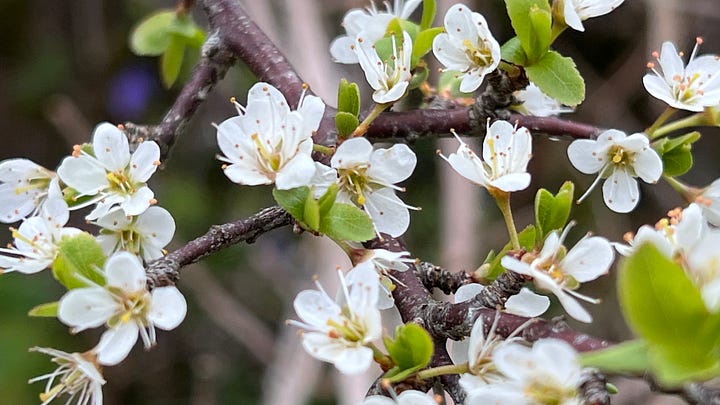
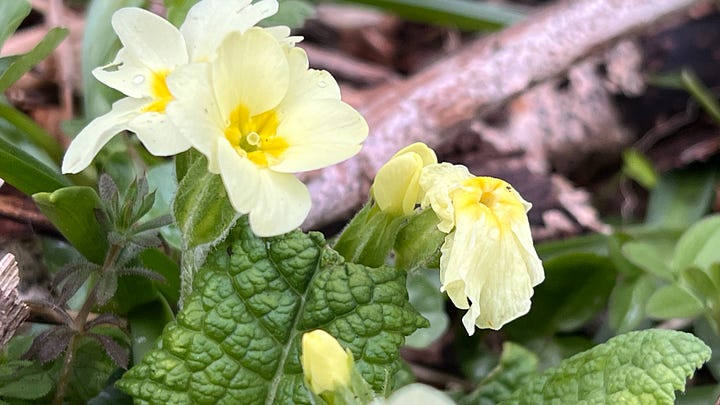
Our only concern was the weather. It was mild but with a strong northerly wind. Having only a lightweight summer tent and sleeping bags to minimise the weight of our backpacks, we hoped not to regret our decision.
I would advise you to hike in the opposite direction to what we did if you plan on going to Lismore from Port Appin. Once off the ferry, head right, passing though a gap in the fence keeping the coast on your right hand side. This will lead you around the northern perninsula. This section of coast is more dramatic and scenic as well as avoiding the road. There is also more options for wild camping on this side of the coast if you start later in the day than we did.
The first thing Eve and I wanted to do after getting off the ferry was to visit Tirefour Castle (Broch). The castle took us longer to reach than expected, not arriving until about 1 pm. The combination of slow walking, heavy backpacks, getting distracted by flora and fauna and stopping constantly to take in the sea views, took its toll on our pace. Once we arrived at Tirefour Castle we were both hungry and in need of a hot drink.
Sitting inside the broch, we escaped the worst of the wind that was now starting to feel quite cold. Having collected some water from a nearby burn, we set about brewing a cup of tea and eating our homemade Biscoff flapjack.
Tirefour Castle is an Iron Age broch located 4 kilometres north of Achnacroish on Lismore. Although now a ruin, the isolated location gives it a real, tangable feeling of stepping back into the past. The remains of the access door, although now filled in and the circular design gives a good impression of what if could have been like in its prime. I highly recomend the small detour to visit the broch, if for no other reason, the views from the walls towards the mainland and Oban are impressive.
A broch is a dry-stone circular tower. Broch’s are a unique type of ancient Scottish architecture, primarily found in the Scottish Highlands and Islands.
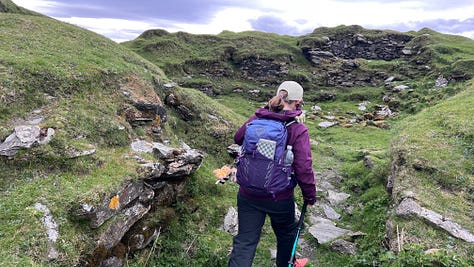
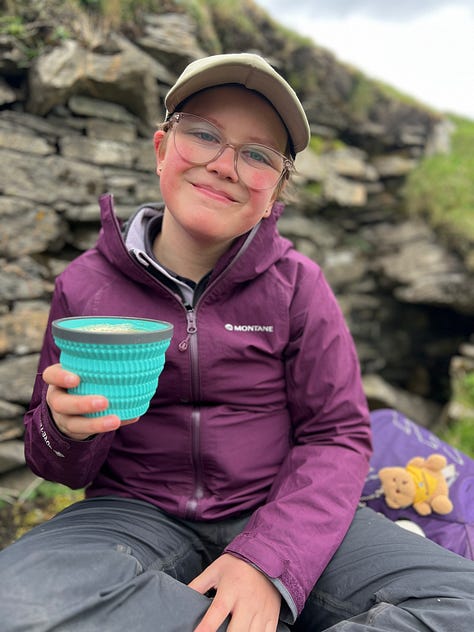
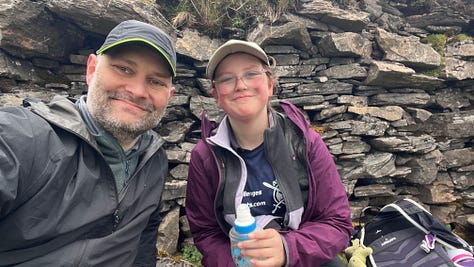
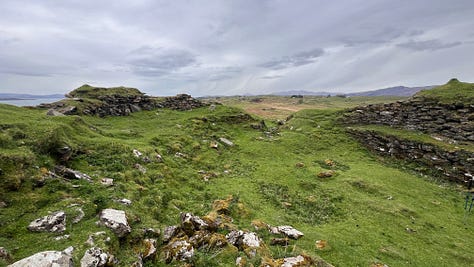
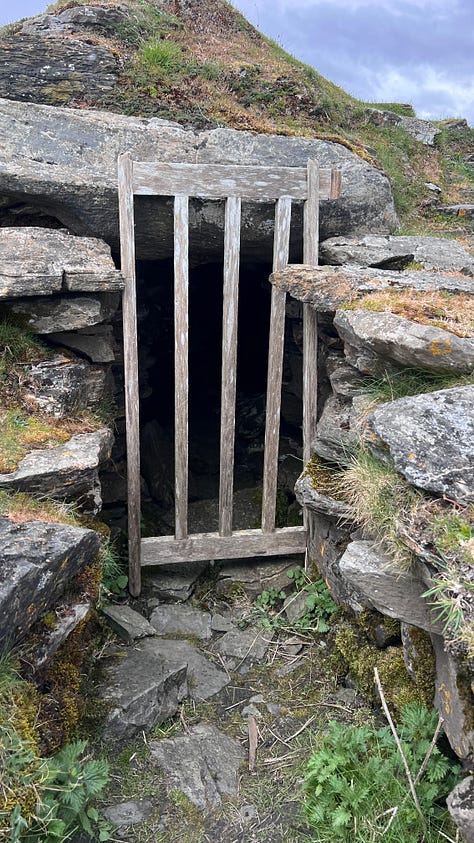
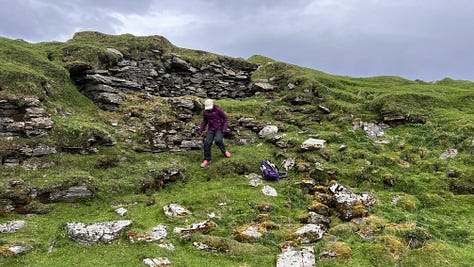
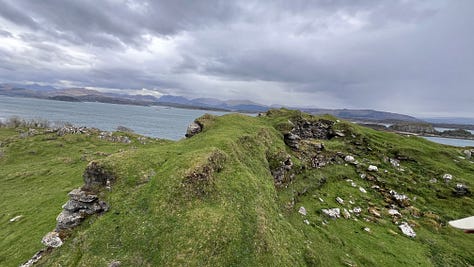
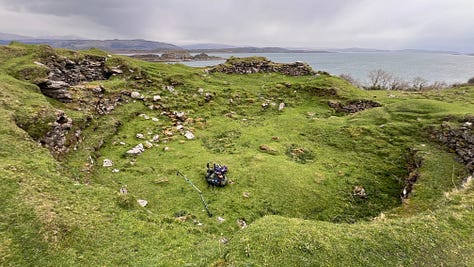
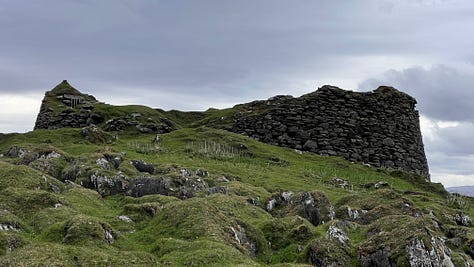
After leaving Tirefour Castle, we followed the coastline along an unmapped footpath. There were waymarkers for this route that we found, although many are hard to spot. There are styles and ladders to allow you to climb over the walls and hedges, although at the time of writing this, many of these are in a poor state of repair. Care was needed when crossing a ladder as it had no support on the lower sections on the opposite side of the approach. Eve, who went first, enjoyed directing me across safely.
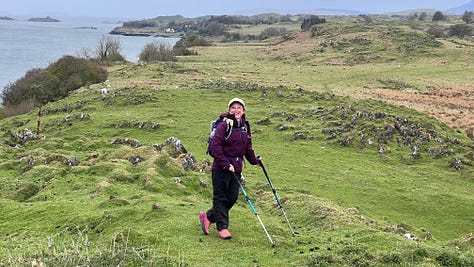
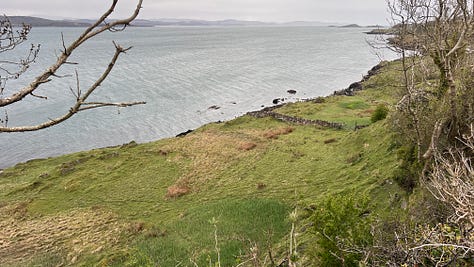
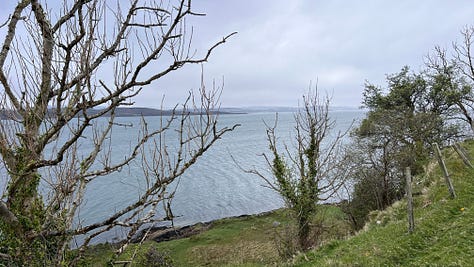
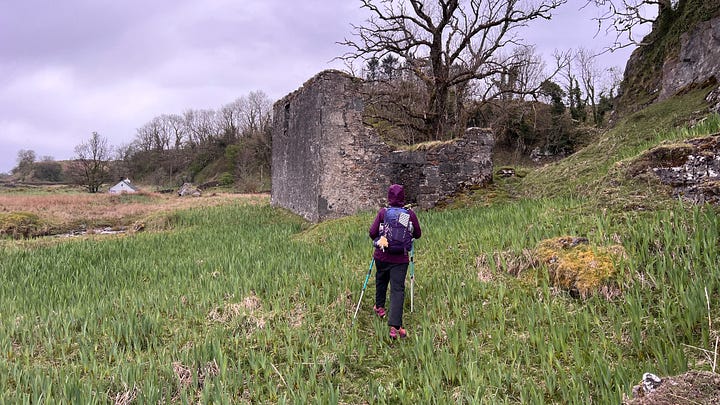
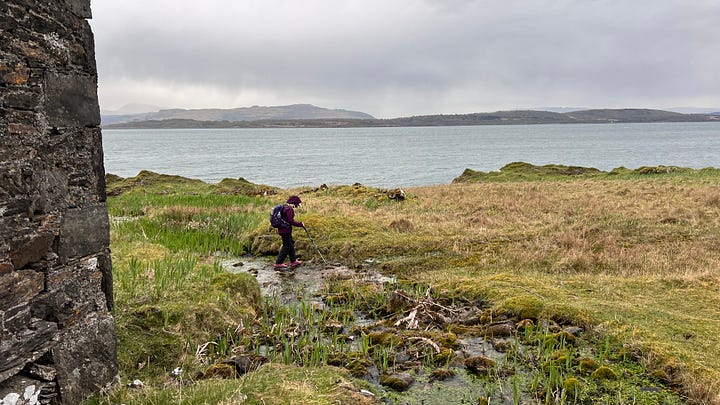
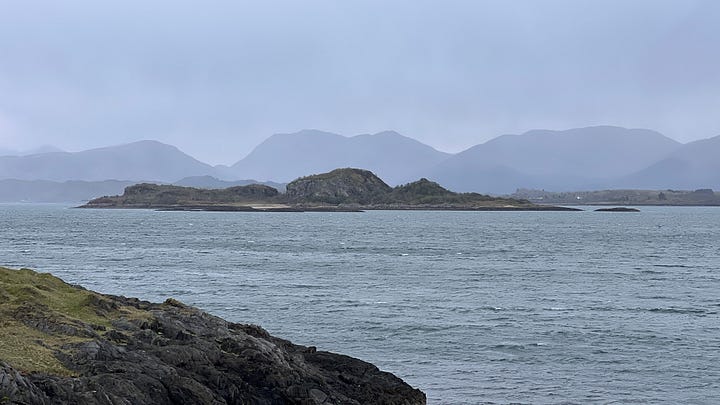

The plan for the afternoon was quite simple. As the time was approaching mid-afternoon, we decided to see how far south we could hike before having to stop to find somewhere to wild camp.
Our thinking behind hiking south was to see the small southern islands of Lismore around Eilean Musdile. We both wanted to see the lighthouse perched on the rocks at the very tip of the island. The southern islands are not accessible without a boat. Eve and I were very keen to see how close we could get. We also hoped to find a camping spot in this area. We didn’t make it as far as we would have liked. But more on that later!
Once we reached the main port on Lismore at Achnacroish (where the car ferry from Oban docks), the most obvious route south was to follow a quiet road. After spending most of the morning on tarmac, we were keen to try and stay ‘off road’. With a simple strategy of keeping the coast to our left, we headed off over the fields.
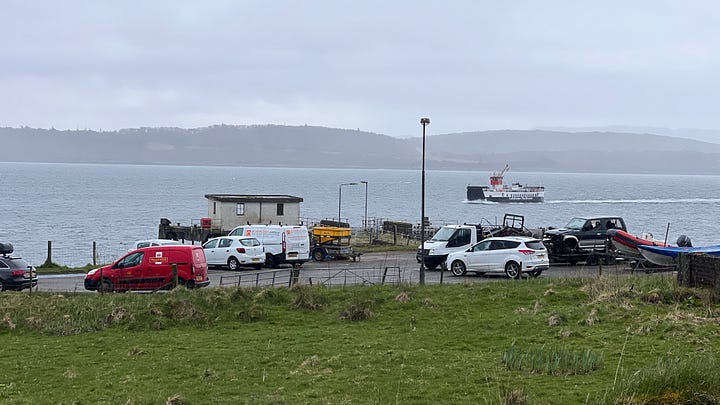
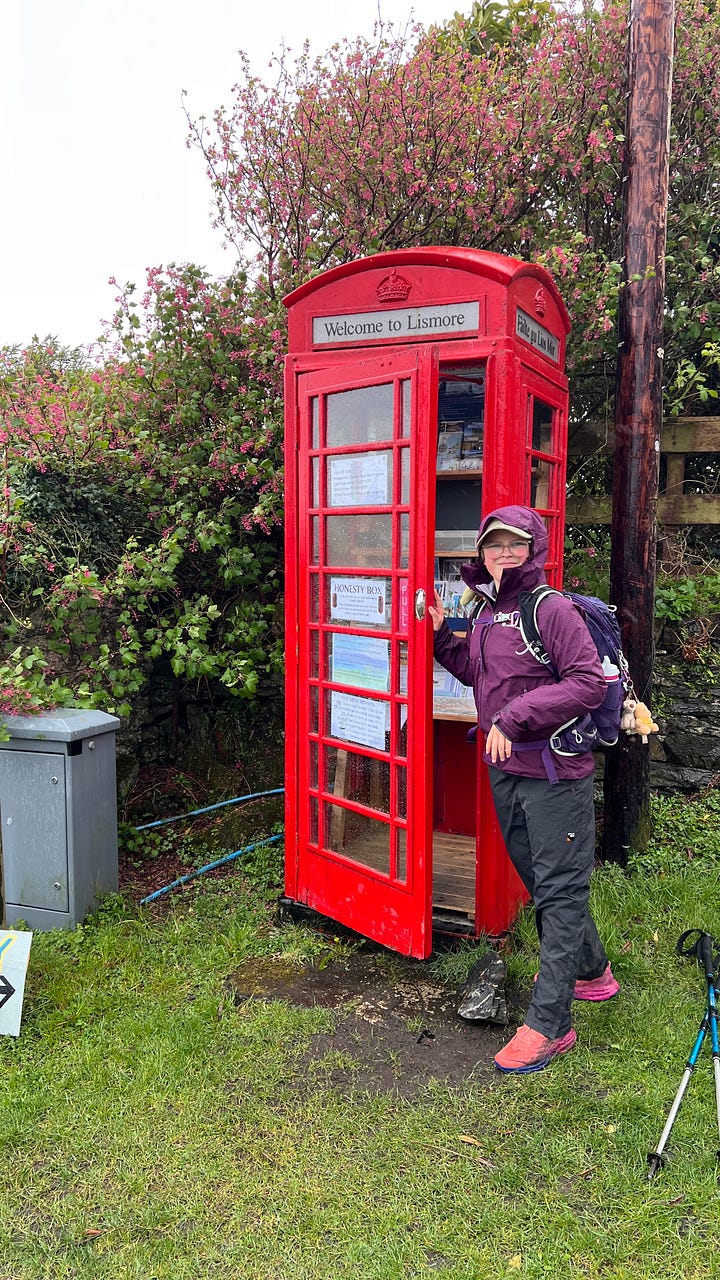
The port at Achnacroish from Oban, also has a small waiting room, toilet and honesty box located in the old red phone box.
This worked well until we reached a dry stone wall.
The wall wasn’t particularly high, nor would it have been hard to climb. However, many stone walls of this kind are old and fragile, and we did not want to cause any damage.
I spotted a sign telling us there was a gate 100 metres along the wall. We set off over very rough, hilly ground to find the gate. However, as it turned out, it didn’t even exist!
After an exhausting thirty minutes of hiking, we finally found a gap in the wall where the stones had collapsed. Crossing here, we headed back towards the coast, picking up a long dirt driveway leading away from a modern-looking home that wouldn’t have looked out of place on Grand Designs.
Taking photographs was all but impossible as the rain was coming in sideways, rendering the iPhone camera all but useless!
Following the track, Eve and I wound our way back onto the country lane (B8045) to continue heading south.
The road was easy enough to walk along with no traffic. The highlight was passing Kilcheran Loch.
Kilcheran Loch was noisy in all the best ways; the birds singing, the water lapping, and a small babbling burn feeding into the loch. If it had been an hour or two later in the day, we would have seriously considered camping in the area.
We hiked on for a while, passing the loch, discussing the options for finding a wild camping spot as we were both starting to feel tired. Time seemed to be speeding fast, forcing us to rethink our plan of reaching the southernmost tip of Lismore!
By now, were now making plans and studying the map for the possibility of camping along the south coast of Lismore somewhere. The agreement was to keep going until we got off the main country road, into open country and away from all livestock.
Reaching close to Loch Fiart, it was around 5 pm and time to stop for the night and make camp. We were both very tired and hungry!
Heading off the track onto the coastline, we found a secluded, unenclosed patch of land with no livestock in or adjacent to where we made camp.
We pitched our tent, got some water from a nearby burn and a farmer arrived on a quad bike. Not unusual, we have met many people hiking and camping and had polite conversations.
This was not such a positive experience. The farmer was aggressive and angry, and I’m still not sure why, but our presence clearly offended him!
At the start of the confrontation, I didn’t fully understand what he was trying to say as he was mixing his words. My lack of understanding didn’t help the situation! Basically he didn’t want us camp there and told us we would ‘kill’ his lambs if we stayed! Eve, who was speaking with Sarah on the phone, overheard everything. Once the farmer had left, we all agreed that we should immediately move on to find an alternative camping spot and avoid any further escalation. Eve at this point, was very upset, not only because of the farmer’s aggressive behaviour but also because of what he said about the lambs (we could see no livestock at all, or we would not have camped there).
In all our years hiking and wild camping, this is only the second time we have encountered anybody like this. It’s a pity, but I can also empathise. The dirty camping epidemic of the post-COVID era has done a lot of damage to the genuine wild campers!
I have since found out that a certain famer located in the area of Loch Fiart has a reputation for being millitant and ‘not very welcoming’ to anybody. My advice, avoid stopping in this area for any reason whatsover, especially if you have children with you!
By luck, we hadn’t fully set up camp as we were taking our time to enjoy the views. We were packed and gone within about 10 minutes, walking around the coast for another 30 minutes or so, before finding another wild camping spot.
Moving on was a blessing. Our new camping spot was better sheltered and flatter. We both had a better night’s sleep than if we had remained at the previous location where the farmer had approached us. I’m taking that as a blessing in disguise.
Dinner that evening was positively luxurious. I had carried frozen burgers and a few trimmings to cook on our little canister top stove. The only downside, it took two hours to cook!
Our cookpot is made out of titanium without a non-stick coating. Its best used to boil water or cosy cooking, which is our main cooking method.
Cooking anything in titanium is technically possible, with patience and care. Each burger took 20-25 minutes of slow frying before I considered it safe to eat. Hot fried burgers whilst wild camping (for us) is a treat. In fact, it’s the first time I've tried cooking burgers while wild camping! I don’t think I would do it again anytime soon, but as an occasional treat, if you have the time, I highly recommend giving it a try.
After dinner, we settled down for the night, falling asleep listening to the sound of the sea crashing against the rocks.
Lismore - Day 2
Waking early and with little agenda for the day, we lay in our sleeping bags, talking and planning for the day ahead. The rain was landing on the tent, creating rhythmic and therapeutic sounds that made us feel snug and protected from the elements outside. It felt wonderful!
Breakfast was again gourmet: Lorne sausage rolls.
Lorne sausage I have cooked before in our titanium pot. I felt more comfortable cooking these than the burgers the night before. It was a substantial breakfast, along with a cup of tea and coffee that would set us up for the day ahead.
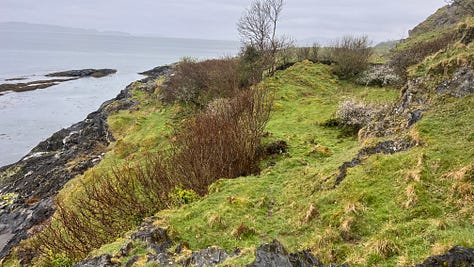
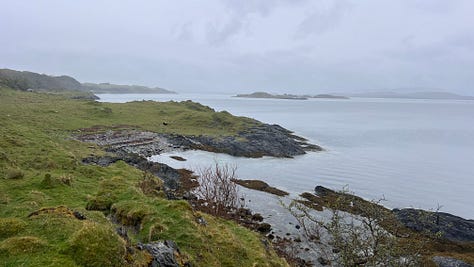
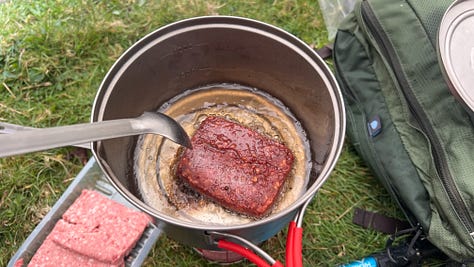
After packing up and ‘leaving no trace’, Eve and I headed straight up and over Lismore to the north side of the island. Part of this was to get away from the area with the angry farmer. We also decided that we would try to return at a later date (with Sarah hopefully) to reach the southern point of the island.
The walk up and over Lismore took us past Loch Fiart, which is a grand-looking Loch. Loch Fiart could fool you into thinking you were high up in the mountains of the mainland, not on a small island off the coast of Oban!
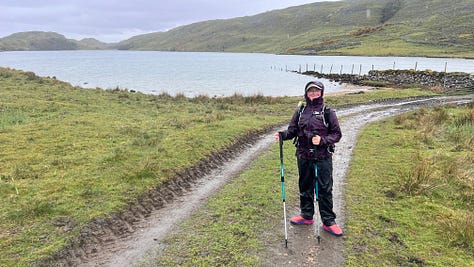
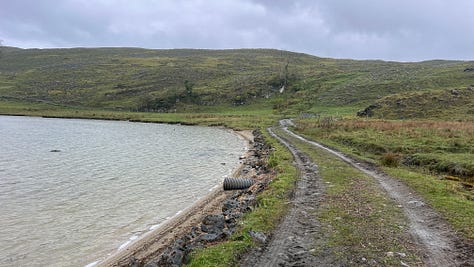

We followed a substantial farmer’s track passing a herd of cows before heading off on a compass bearing using traditional navigation techniques due to the rain. Rain and an iPhone touchscreen are not compatible. The compass bearing wasn’t necessary, but offered a good way to inject some home education into Eve’s daily routine by practising map and compass work in a safe environment.
The plan for the morning was to stay close to the north coast and reach Sailean. We didn’t go to Sailean as we weren’t concentrating on where we were going!
Walking through Achinduin, we followed the road towards Sailean but failed to turn off as we were too busy talking and missed the junction! The benefit of not having a strict schedule or fixed plan is that these mistakes are not particularly detrimental!
There is a castle at Achanduin that we wanted to visit, but didn’t. We intend to return at a later date to visit the ruins of castle Achanduin
We didn’t realise we had gone wrong until we reached the main B8045 that cuts through the centre of the island of Lismore!
Realising our mistake, we once again studied the map to formulate a new plan! We would continue to Lismore post office with the hope of being able to send Sarah a postcard and then visit the Lismore Gaelic Heritage Centre.
We reached the post office, relieved to find it open and that the last post hadn’t yet been collected! Eve selected a postcard, purchased a first-class stamp and sat outside on a bench to write it! Eve got it in the post with about 30 seconds to spare. The friendly postman even let Eve watch as he emptied the letter box and explained the journey the postcard was about to embark on.
Popping back in, we purchased an ice cream cone at Eve’s request. Thank you to everybody who has donated to our coffee and ice cream fund on Buy Me a Coffee. It’s these generous donations that allow us (mainly Eve) to enjoy treats like this whilst hiking. Thank you
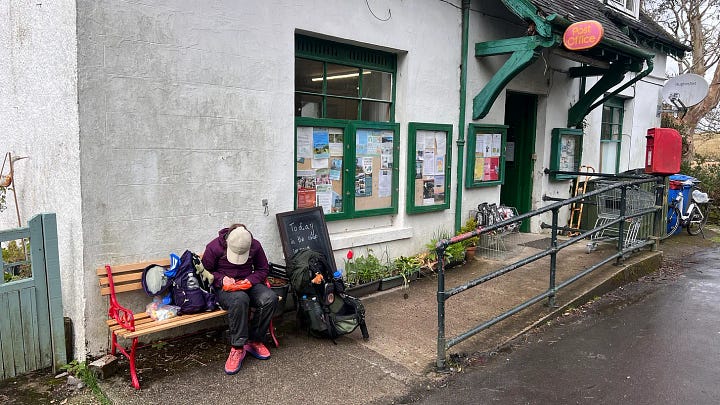
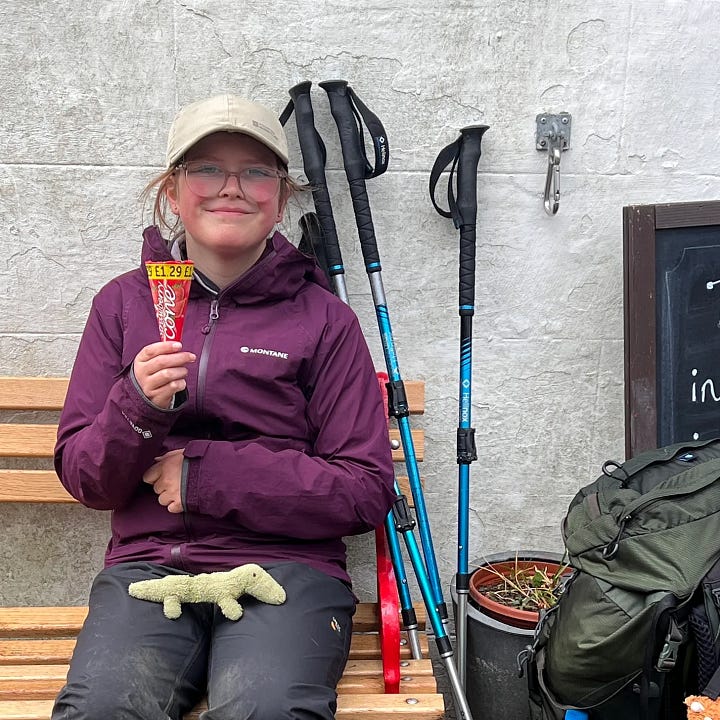
A short walk later, we arrived at the Lismore Gaelic Heritage Centre.
I didn’t know what to expect from the centre, but it exceeded all of them! I highly recommend a visit, even if it means making a detour from your hiking route!
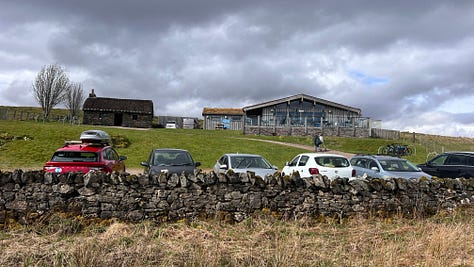
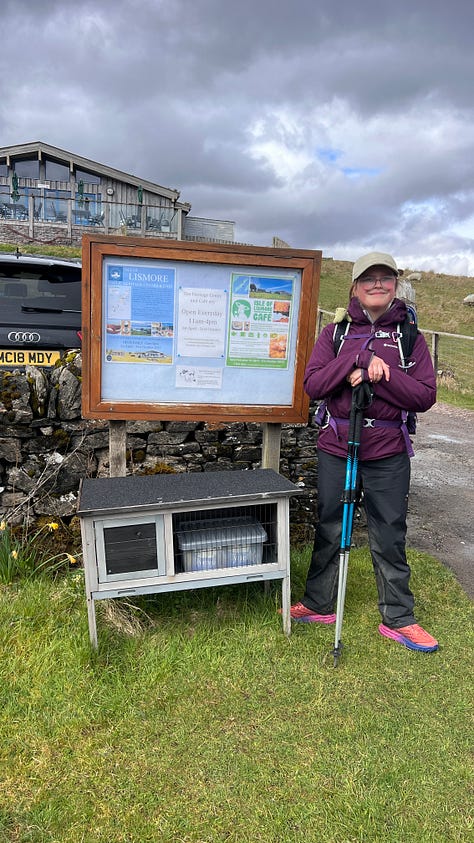
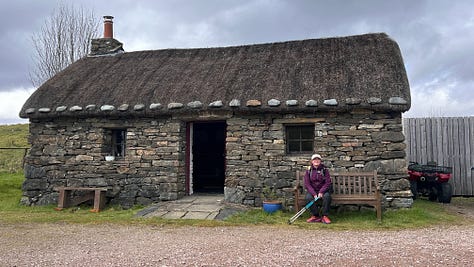
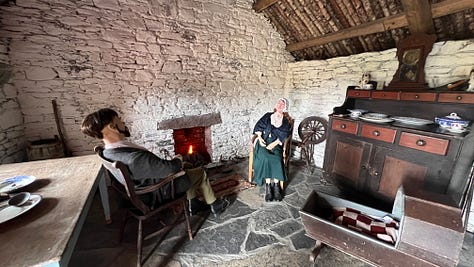
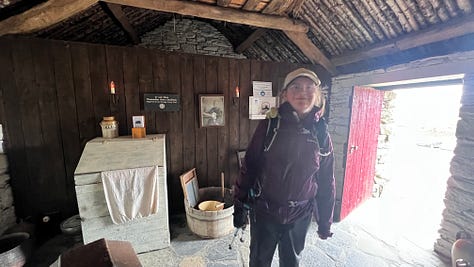
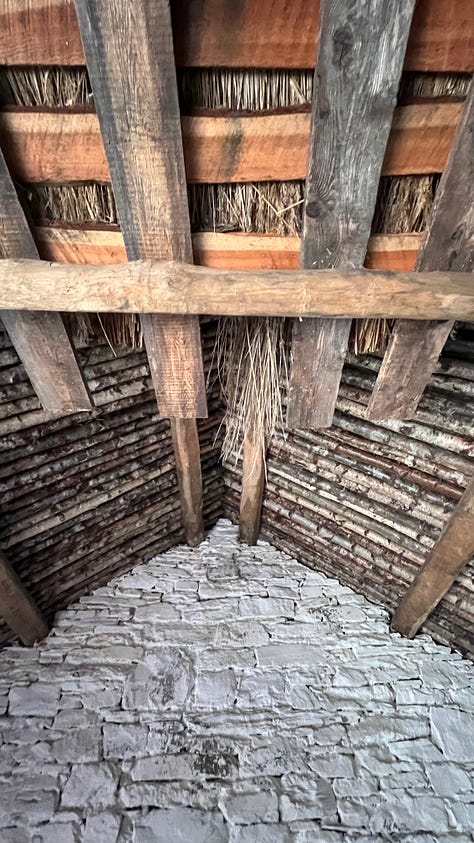
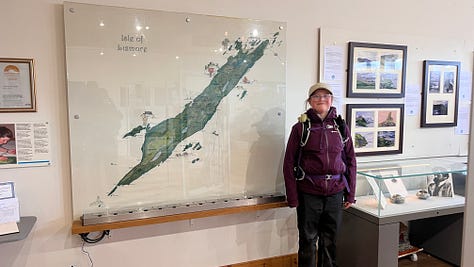
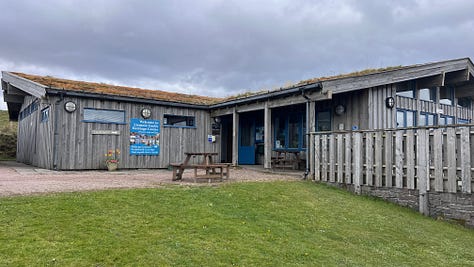
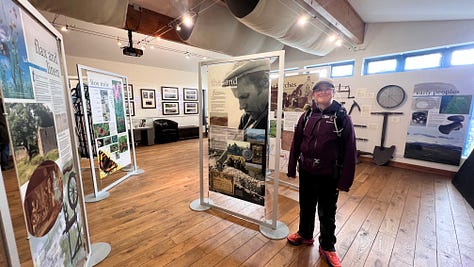
Lismore Gaelic Heritage Centre is free to enter, has an abundance of resources and information in the museum, a shop, a cafe and a 19th century cottar’s house. If ever you need a reminder of how easy we have it in the 21st century, take a visit to the cottar’s house on Lismore! It’s a stark and sobering reminder of how lucky we are!
Leaving the centre, we had one place left that we wanted to visit: St Moluag’s Cathedral.
St Moluag’s Cathedral isn’t big and wasn’t open when we got there, but it has plenty of history, and the cemetery has a lot of character. There is a small sheltered area for some of the ancient stone carvings, but most of what was the original building has long since gone.
We didn’t spend too long walking around as the first two gravestones we read were both dedicated to children. It left us feeling less than jovial and reminded us again how lucky we are.
St Moluag’s Catherdral is now a parish church that stands on the site of a 13th century cathedral.
By now, it was mid-afternoon, and time to start thinking about where we would be spending the night.
The decision on where we would camp was an easy one. We would walk the short distance back to the coast and find somewhere around the epic Castle Coeffin.
If you ever get the chance to visit Lismore, Castle Coeffin should be top of the list! It’s such an amazing and emotive sight, I challenge you not to be awed by its splendour.
When we published a photo of the castle on our social media, a follower commented that it looked like the castle from Lord of the Rings: The Fellowship of the Ring, where Frodo was stabbed by the Witch King, and I couldn’t agree more! Set against the sky, sea and mountains, it’s a sight to behold, and in the setting sun, it made for a formidable sight that will stay with me forever! No photograph could ever hope to convey the drama and feeling of standing underneath its towering pillars and the defensive rock upon which it’s built.
We camped right beside the castle, on the coastline, out of sight of passersby but in full view of the castle. It was one of the most dramatic camping spots we have slept in.
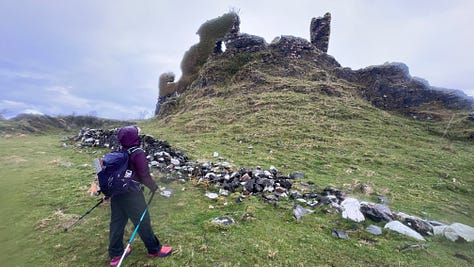
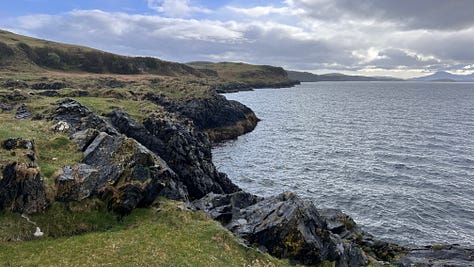
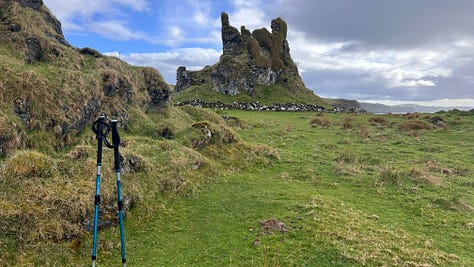
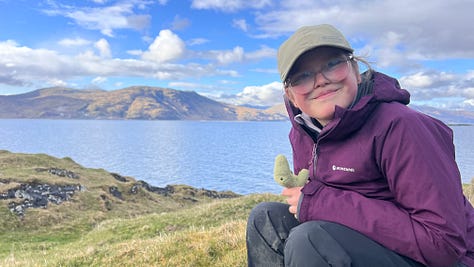
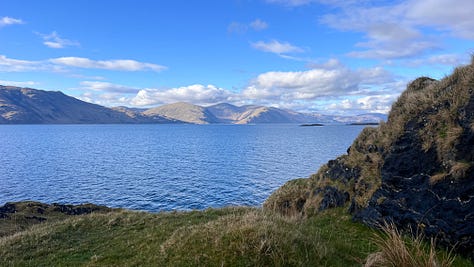
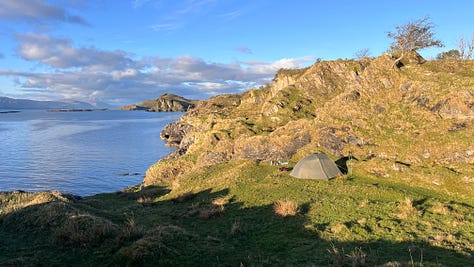
Castle Coeffin was orginally a viking fort. The later castle was build in the 13th century by the MacDougalls of Lorn. It was last occupied in the late medieval times. There is a legend that the castle was haunted by a woman buried at the castle, who yurned for her lover. When her bones were returned to Norway to be buried next to her lover, the hauntings ceased!
Dinner that evening was a more humble affair. Pasta, fish and beans. Quick, easy, simple and filling, perfect after a hard day’s walking. Such was the drama of the location we were camping at, as we sat outside cooking dinner, we had rain sweeping in and over us, but at no point did we retreat into our tent. We sat in the rain, eating dinner, watching the weather dance around us. Spending any time outdoors and on the coast, you will soon learn that TV and mobile phones only serve as a distraction to the real show that is happening.
We fell asleep happy and content, listening to the waves lapping the rocks and rain tap-tapping on the flysheet of our little tent.
Lismore - Day 3
The next morning, we woke to the sun and blue sky. It was the best day yet, but unfortunately, also our last day on Lismore. Breakfast was hot porridge with a Nalgene full of tea for Eve and coffee for me! The traditional tried and tested breakfast all backpackers will be familiar with!
Today’s walk was the best, and the reason why I strongly suggest starting your hike along this section of shoreline.
Following the coast, we passed over meadows, down grassy tracks, over rocks and under cliffs, passing caves and wildlife everywhere we looked, all the while hugging the rocky and rough coastline that gives Scotland some of the best coastal walking in the world! For such a small island, Lismore lives up to its namesake ‘Garden’. It has something for everybody!
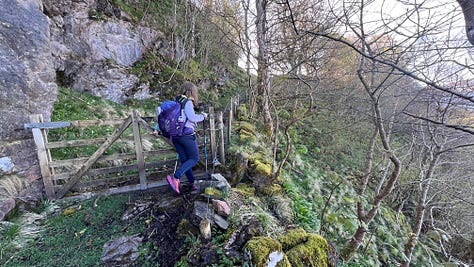
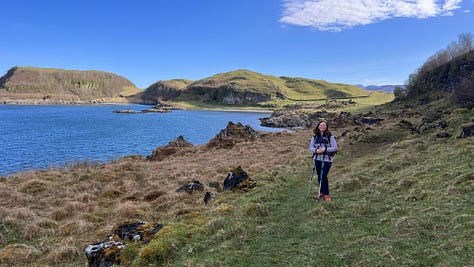
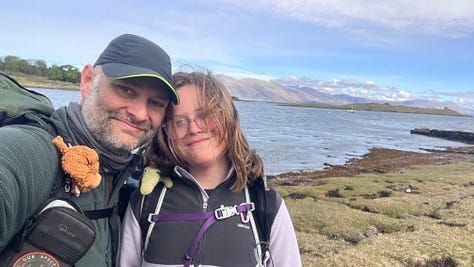
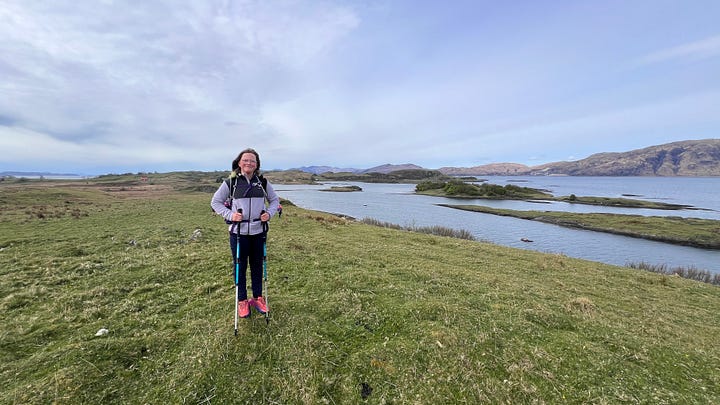
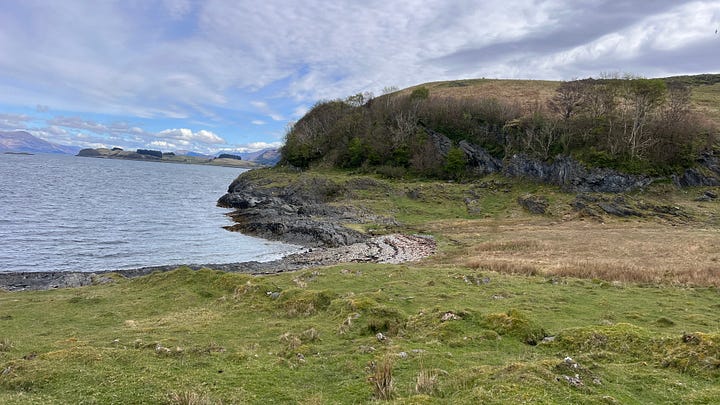
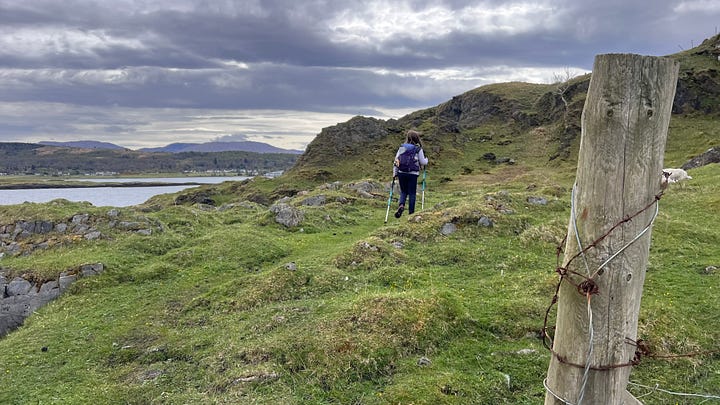
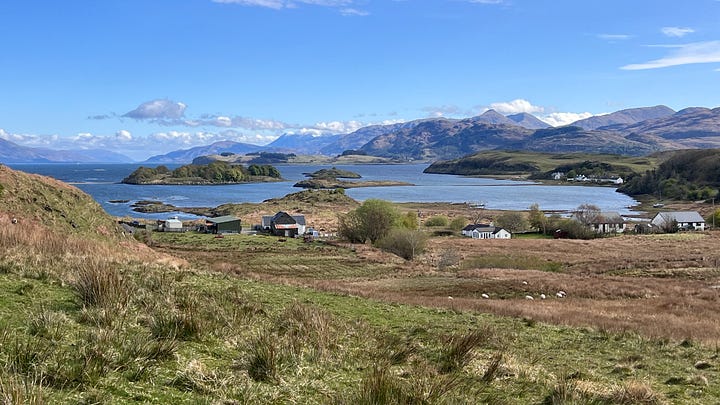
Eve and I arrived back at the northern tip of Lismore 30 minutes before the next ferry.
We sat outside and enjoyed our last lunch on the island. Biscoff flapjack and cheesy biscuits! It was the perfect end to an incredible mini-adventure around one of Scotland’s many beautiful islands.
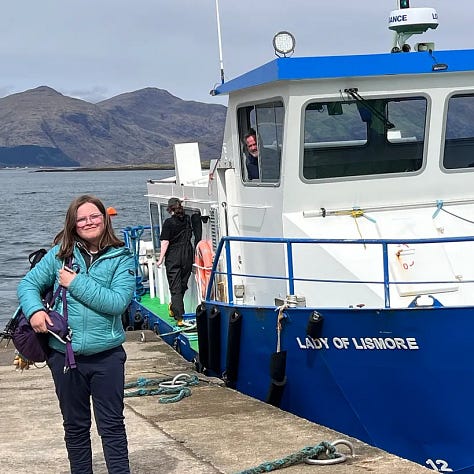
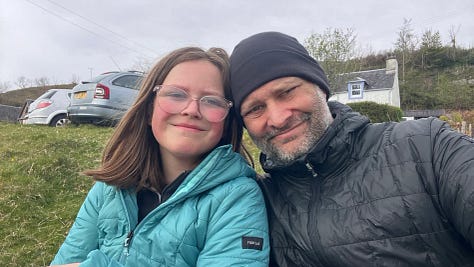
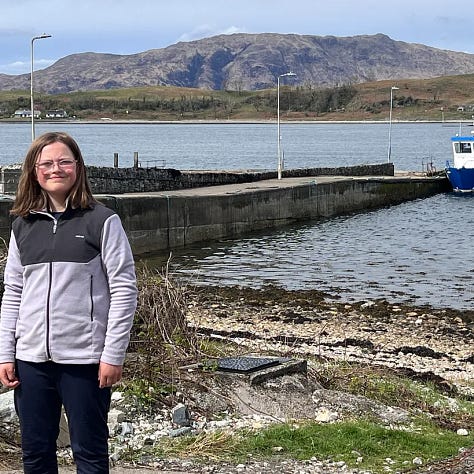
I hope it’s the start of many more like it, and I hope you will come along with us for the adventure.
Thank you and thank you, Lismore!
Thank you so much for reading, and I hope you enjoyed it as much as I did writing it! If you did, please consider subscribing or buying us a wee treat on Buy Me a Coffee.
Thank you.
Ian, Eve & Sarah





